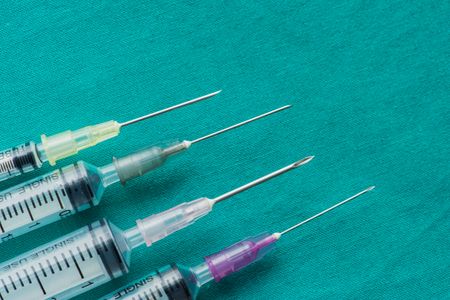Novel Materials & Design in Injection Pen Needles to Reduce Pain and Improve Safety
 Harry Lee
01 Oct, 2025
13 mins read
34
Harry Lee
01 Oct, 2025
13 mins read
34

For millions of patients worldwide, daily injections are a routine part of managing chronic illnesses such as diabetes, growth disorders, and autoimmune conditions. Yet, despite advances in drug delivery, needle-related pain and safety concerns remain significant challenges. The discomfort caused by traditional designs often deters patients from proper adherence, while accidental injuries raise safety concerns for healthcare professionals. These challenges created a demand for innovation in both materials and design. Modern research has focused on finding novel materials and advanced engineering techniques to improve the performance of injection pen needles. This documentary explores how these developments are reshaping patient comfort, usability, and safety standards in the medical field.
Evolution of Injection Pen Needles
The earliest pen needles were relatively simple, manufactured with stainless steel and produced with basic machining. While effective in delivering medication, their designs lacked refinement, often causing unnecessary pain during insertion. The absence of precision engineering led to thicker tips and less efficient penetration. Over time, advances in micro-machining, laser cutting, and polymer science enabled smaller, sharper, and safer needles.
Modern injection pens are now considered medical devices requiring high performance. Manufacturers began experimenting with biocompatible coatings, ultra-thin walls, and ergonomic designs. Each improvement aimed at solving one key issueâ€â€how to deliver medication while reducing discomfort and improving safety for both patients and professionals. Implementing AT-point of care dispensing adds another layer of accessibility, allowing patients to receive their injection pens immediately at the point of treatment.
Role of Novel Materials
High-Grade Stainless Steel and Beyond
The foundation of injection needle production has traditionally relied on surgical-grade stainless steel. This material offers strength, corrosion resistance, and durability. However, innovations have introduced nickel-free alloys and lightweight composites that decrease allergic reactions and allow finer gauges without compromising structural integrity.
Polymer Integration
Another notable advancement has been the incorporation of high-performance polymers. Polymers reduce the weight of the device while maintaining flexibility and resilience. They also permit precise molding for protective shields and automatic safety features, improving the overall patient experience.
Biocompatible Coatings
Perhaps the most transformative material innovation lies in coatings. Modern coatings such as silicone, PTFE (polytetrafluoroethylene), and proprietary hydrophilic compounds dramatically reduce friction during skin penetration. This technology allows needles to glide smoothly with minimal resistance, directly lowering pain perception.
Engineering Sharper and Safer Designs
Ultra-Thin Wall Needles
One of the most significant design breakthroughs has been the ultra-thin wall structure. These designs allow larger medication volumes to flow through narrower gauges. Patients benefit from less invasive entry points while still receiving efficient delivery. As a result, you should encourage the use of thin-wall technology when advising patients about needle options, as it balances comfort with effectiveness.
Multi-Bevel and Precision Tips
Traditional needles used single-bevel tips, which required more force for skin penetration. In contrast, multi-bevel engineering creates several cutting edges that spread penetration force more evenly. Patients report less stinging sensation, and you should recommend these options where available. Precision grinding also ensures consistent sharpness, avoiding the uneven entry that often causes pain.
Ergonomic Safety Shields
Healthcare workers face risks of accidental needle sticks, which can transmit infections. To reduce this hazard, companies have designed ergonomic protective shields that lock immediately after injection. These shields not only protect users but also build confidence among patients who may otherwise fear injury. You should emphasize the importance of selecting devices with integrated safety systems when guiding clinical procurement.
Reducing Pain: The Patient’s Perspective
Pain perception is not only physical but also psychological. Patients often develop needle anxiety when they anticipate discomfort. By introducing smaller gauges, lubricated coatings, and smooth insertion angles, modern devices address this concern directly.
Clinical studies reveal that shorter needle lengthsâ€â€such as 4 mmâ€â€provide equal efficacy compared to longer versions while significantly reducing pain. You should educate patients on the fact that shorter needles do not compromise medication absorption, as many still mistakenly believe. Clear communication fosters confidence and improves adherence.
Improving Safety: The Healthcare Perspective
For clinicians, the priority extends beyond patient comfort. Accidental needlestick injuries represent a persistent occupational hazard. Safety-focused designs, including retractable needles, passive shields, and audible locking systems, greatly reduce risks. You should insist on devices with these features in clinical environments, ensuring compliance with occupational safety regulations.
Another area of focus is dose accuracy. Needles engineered with ultra-thin walls and precise dimensions reduce dosage errors by enabling smoother medication flow. As a professional, you can highlight that accuracy in delivery not only benefits patients but also minimizes long-term treatment costs.
Sustainability and Environmental Impact
In addition to safety and comfort, manufacturers face growing responsibility toward sustainability. Single-use plastics and metals generate substantial medical waste. Novel solutions such as biodegradable polymers and recyclable components are beginning to shape the future. While widespread adoption is still developing, you should support initiatives that promote sustainable practices without compromising safety.
Integration with Smart Technologies
The next phase in injection pen needle design is integration with digital health technologies. Smart sensors embedded in pen systems can monitor injection depth, angle, and frequency. This data provides valuable insights for both patients and physicians. You should encourage patients to adopt smart-enabled devices, especially those requiring frequent injections, to improve adherence and track their progress.
Market Outlook and Global Adoption
With chronic disease prevalence rising, demand for advanced injection solutions continues to grow. According to market analyses, Asia-Pacific regions are witnessing the fastest adoption rates, driven by diabetes cases and government initiatives promoting safer devices. You should recognize that accessibility and affordability remain key barriers in low-income regions, where conventional needles are still widely used. However, as technology becomes more cost-effective, global adoption will likely accelerate.
An example of this trend can be observed in the injection pen market innovations enhancing drug delivery solutions, where companies worldwide are investing heavily in R&D to improve patient outcomes.
Practical Recommendations for Implementation
As a professional advising healthcare organizations, you should adopt a structured approach when selecting injection pen needles:
- Evaluate patient demographics: Children, elderly individuals, and those with needle anxiety require the most comfortable options.
- Prioritize safety features: Always ensure devices include protective shields or retractable mechanisms to reduce risk for clinicians.
- Balance cost with quality: While premium materials may increase upfront expense, long-term benefits in adherence and safety justify investment.
- Educate users: Providing clear guidance on proper use of advanced needles enhances both confidence and effectiveness.
Final Thoughts
The transformation of injection pen needles through novel materials and innovative design represents one of the most important steps forward in modern drug delivery. By focusing on reducing pain and enhancing safety, the industry not only improves patient experience but also raises healthcare standards globally. You should view these innovations not as optional upgrades but as essential tools for ensuring treatment adherence, clinician safety, and overall system efficiency. The journey from basic stainless-steel structures to smart-enabled, patient-friendly solutions illustrates how far the field has advancedâ€â€and how much further it can still go.
Disclaimer: This documentary is for educational and informational purposes only. It should not replace professional medical advice, diagnosis, or treatment. Always consult qualified healthcare providers regarding medical decisions.
window.NREUM||(NREUM={});NREUM.info={"beacon":"bam.nr-data.net","licenseKey":"NRJS-3109bb2e2783f515265","applicationID":"558315209","transactionName":"blUHbEVQCxECBUVQWVcfMEpeHhARBhRCFlRVXwIXVEMAAxcDU1VZXh4VUEc=","queueTime":0,"applicationTime":198,"atts":"QhIEGg1KGB8=","errorBeacon":"bam.nr-data.net","agent":""}
Written By:
Harry Lee



Hotels at your convenience
Now choose your stay according to your preference. From finding a place for your dream destination or a mere weekend getaway to business accommodations or brief stay, we have got you covered. Explore hotels as per your mood.


